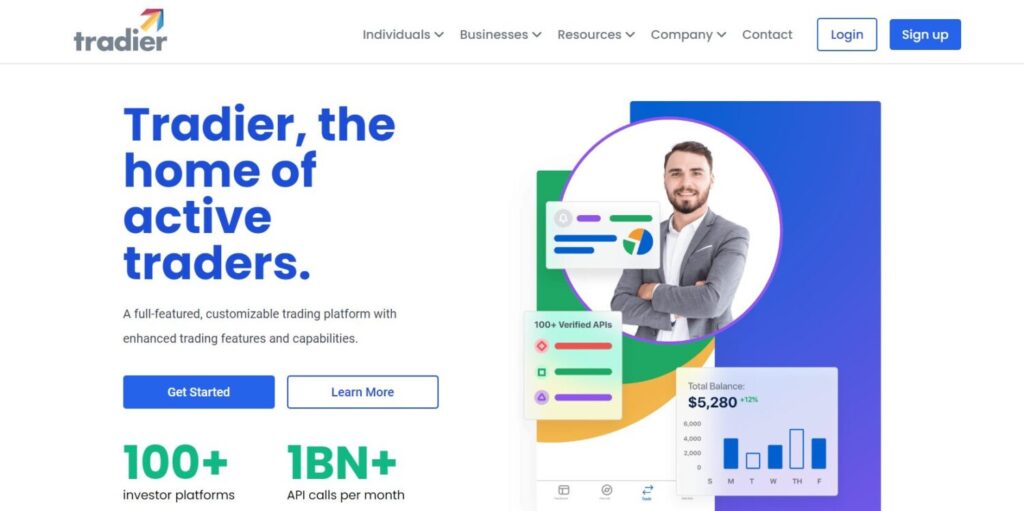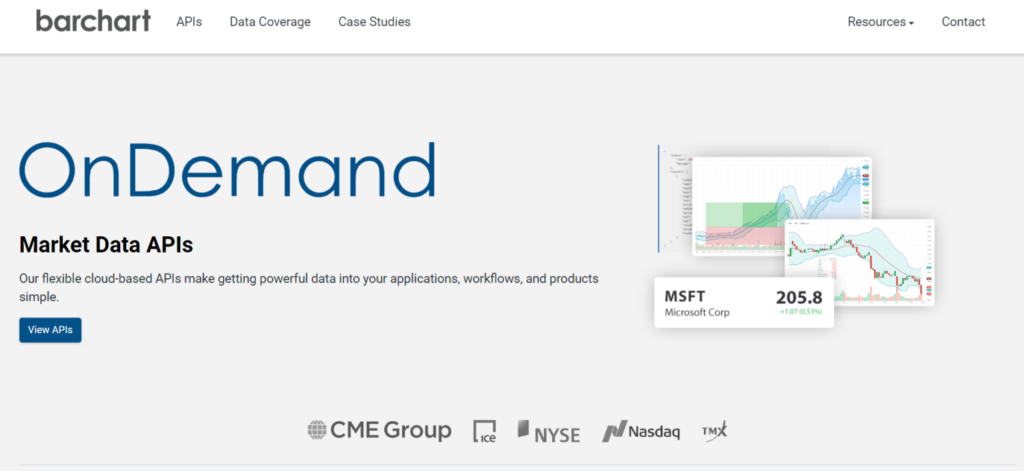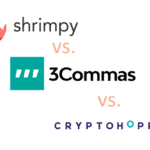I am not a stock market guy, but it is always worth a try ain’t it, so I tried to dive into Finance APIs in order to check on something, so I made a list so here’s a little help : )
Finance APIs (Application Programming Interfaces) are sets of rules and protocols that allow different software applications to communicate with and access financial data and services. These APIs enable developers to integrate financial information and functionality into their own applications, websites, or systems without needing to build everything from scratch.
Popular finance APIs are often provided by financial institutions, fintech companies, and third-party financial data providers. Developers can use these APIs to enhance their applications with real-time and accurate financial information, streamline financial processes, and create innovative financial products and services.

Table of Contents
What types of financial data can I access through Finance APIs?
Finance APIs provide access to a wide range of data, including market prices, stock quotes, economic indicators, currency exchange rates, account information, transaction history, and more. The specific data available depends on the API provider.
How do I use a Finance API?
To use a Finance API, you typically need to obtain an API key from the provider, which is a unique identifier that authenticates your requests. Then, you integrate the API into your application by making HTTP requests to the API’s endpoints. The provider’s documentation will guide you on the available endpoints, request parameters, and response formats.
Are Finance APIs free to use?
It depends on the API provider. Some finance APIs offer free access with limited features, while others may have tiered pricing based on usage. High-volume or premium services may come with additional costs. Review the provider’s pricing model and terms of use for details.
Can I use Finance APIs for real-time market data?
Yes, many finance APIs offer real-time market data, including stock prices, market indices, and currency exchange rates. Be aware that real-time data access may have different pricing structures compared to delayed or historical data.
What security measures should I consider when using Finance APIs?
Security is crucial when working with financial data. Use secure, encrypted connections (HTTPS), protect your API keys, and follow best practices for data handling. API providers often offer guidelines on securing API integrations in their documentation.
Can I build a trading application using Finance APIs?
Yes, many finance APIs provide features for building trading applications, allowing you to execute trades, manage portfolios, and access market data. However, ensure compliance with financial regulations, and be aware of any limitations or restrictions imposed by the API provider.
Can I use Finance APIs for cryptocurrency data?
Yes, there are specific finance APIs dedicated to providing cryptocurrency data, including prices, market trends, and blockchain information. Examples include CoinGecko API and CoinMarketCap API.
Also Read ➤ ➤ UNCOVERING THE Crypto Friendly Web Browsers You Must Know!
The Main Agenda – Best Finance APIs

Alpha Vantage

Alpha Vantage provides a comprehensive set of financial market data APIs, covering a wide range of asset classes. Unique factors include the availability of both free and premium plans, a user-friendly interface, and support for various technical indicators. The API offers real-time and historical data for stocks, forex, cryptocurrencies, and more. Alpha Vantage’s simplicity makes it suitable for both beginners and experienced developers looking to integrate financial data into their applications.
Pros:
- Free access to a robust set of financial data.
- Wide coverage of asset classes, including cryptocurrencies.
- User-friendly documentation and easy integration.
Cons:
- Rate limits on free plans may limit high-frequency usage.
- Some advanced features may require a premium subscription.
- Limited customer support for free users.
Polygon.io

Polygon.io focuses on providing real-time and historic market data with a strong emphasis on scalability and reliability. Unique factors include low-latency WebSocket streaming for real-time data and support for a variety of asset classes. The API stands out for its simplicity in accessing complex market information, making it suitable for developers building high-performance trading applications or financial platforms.
Pros:
- High-performance WebSocket streaming for real-time data.
- Wide coverage of market data, including equities, forex, and cryptocurrencies.
- Competitive pricing plans for developers and enterprises.
Cons:
- Some advanced features may require higher-tier subscription plans.
- Limited historical data on the free plan.
- The documentation may require additional clarification for certain functionalities.
Also Read ➤ ➤ Top 10 Development Service Providers
Tradier

Tradier offers a brokerage API that enables developers to build trading and investment applications. Unique factors include commission-free trading capabilities and a powerful set of features for executing trades and managing portfolios. The API is designed for both individual developers and institutional users, providing access to equities, options, and cryptocurrency trading.
Pros:
- Commission-free trading capabilities.
- User-friendly documentation and easy integration.
- Supports equities, options, and cryptocurrencies.
Cons:
- Limited coverage compared to some other brokerage APIs.
- Some advanced features may require a premium subscription.
- The focus on trading may make it less suitable for developers seeking extensive market data.
Intrinio

Intrinio offers a diverse range of financial data feeds, APIs, and analytics solutions. Unique factors include access to alternative data sets, such as economic indicators and social sentiment data. The API caters to various financial professionals, including developers, traders, and analysts, providing reliable and accurate data for equities, indices, and economic indicators.
Pros:
- Access to a wide range of financial data, including alternative data sets.
- Detailed documentation and excellent customer support.
- Multiple data delivery options, including WebSocket streaming.
Cons:
- Pricing may be on the higher side for certain data feeds.
- Beginners may find the extensive data options overwhelming.
- Some advanced features may require additional subscription levels.
Also Read ➤ ➤ Best Patent Monitoring Services
Xignite

Xignite specializes in delivering cloud-based financial market data APIs. Unique factors include a focus on serving fintech innovators and a wide range of coverage across global markets. The API provides real-time and historical data for equities, commodities, forex, and more, making it suitable for developers creating applications that require diverse financial information.
Pros:
- Extensive coverage of global financial markets.
- Scalable and reliable cloud-based infrastructure.
- Variety of data feeds, including commodities and interest rates.
Cons:
- Pricing may be relatively higher for certain data types.
- Complex pricing model with different tiers for various data sets.
- Some users may find the documentation less intuitive compared to other providers.
Barchart OnDemand

Barchart OnDemand offers a wide range of financial market data APIs, including real-time and historical data, analytics, and news. Unique factors include access to Barchart’s extensive coverage of commodity markets and agricultural data. The API caters to developers, traders, and financial institutions, providing a comprehensive set of tools for integrating market data into applications.
Pros:
- Extensive coverage of commodity and agricultural markets.
- Multiple data options, including real-time, historical, and news data.
- Competitive pricing with different plans based on usage.
Cons:
- Some advanced features may require higher-tier subscription plans.
- Free access may have limitations on certain data types.
- The documentation could be more detailed for specific functionalities.
Also Read ➤ ➤ Best 10 Financial Risk Management Tools
Financial Modeling Prep API

Financial Modeling Prep API focuses on providing financial statement data, stock prices, and other financial metrics. Unique factors include free access to financial statement data and a simple, easy-to-use API structure. The API caters to developers and analysts looking to integrate financial statement information into their applications for analysis and modeling.
Pros:
- Free access to financial statement data.
- Simple and straightforward API structure.
- Suitable for developers focusing on financial analysis and modeling.
Cons:
- Limited coverage compared to APIs that include market data.
- Advanced features may be lacking for certain financial metrics.
- Some users may find the documentation less comprehensive than other providers.
Quandl

Quandl is known for its extensive collection of financial and alternative data. Unique factors include a focus on delivering premium datasets and an emphasis on data quality. The API caters to quantitative analysts, researchers, and developers, providing access to a vast array of financial, economic, and alternative datasets.
Pros:
- High-quality premium datasets.
- Broad coverage of financial and alternative data.
- Well-documented API with a focus on data integrity.
Cons:
- Premium datasets come with additional costs.
- Free access may have limitations on certain datasets.
- Some users may find the pricing model complex.
Also Read ➤ ➤ BEST Website Performance Testing Tools and Services
CoinGecko API

CoinGecko API focuses on providing cryptocurrency data, including prices, market capitalization, and trading volume. Unique factors include comprehensive coverage of cryptocurrencies, detailed historical data, and the availability of a free plan. The API caters to developers and analysts working with cryptocurrency data for research, analysis, and application integration.
Pros:
- Comprehensive coverage of cryptocurrency data.
- Free access to basic cryptocurrency information.
- Detailed historical data for cryptocurrencies.
Cons:
- Rate limits on the free plan may restrict high-frequency usage.
- Some advanced features may require a premium subscription.
- Limited support for traditional financial market data.
Stripe API

Stripe API is a payment processing API that allows developers to integrate online payment functionality into their applications. Unique factors include a developer-friendly platform, support for various payment methods, and a focus on providing a seamless payment experience. The API caters to businesses and developers looking to handle online transactions securely.
Pros:
- User-friendly documentation and easy integration.
- Wide range of supported payment methods.
- Transparent pricing with no setup fees or monthly charges.
Cons:
- Transaction fees may vary based on the payment method.
- Limited support for certain international currencies.
- Some users may find the extensive feature set overwhelming for simpler applications.
Also Read ➤ ➤ 10 Best Crypto Exchanges for Day Trading EVER! | TRY NOW!
Conclusion
In conclusion, the world of Finance APIs offers a diverse array of tools to developers, allowing them to seamlessly integrate financial data and services into their applications. As highlighted by the exploration of notable APIs, such as Alpha Vantage, Polygon.io, Tradier, Intrinio, Xignite, Barchart OnDemand, Financial Modeling Prep API, Quandl, CoinGecko API, and Stripe API, each has its unique features and strengths catering to different needs within the financial ecosystem.
For developers entering this domain, the choice of the best Finance API depends on their specific requirements, whether it’s real-time market data, trading capabilities, comprehensive financial statement information, or cryptocurrency data. Understanding the nuances of each API, considering factors like ease of integration, pricing models, and available features, is crucial in making an informed decision.
While some APIs offer free access to basic functionalities, others provide premium datasets with additional costs. Security measures, such as protecting API keys and using encrypted connections, are vital considerations. Developers aiming to build trading applications or work with cryptocurrencies should ensure compliance with financial regulations and be aware of any limitations imposed by the API providers.
In essence, the world of Finance APIs presents a wealth of opportunities for developers to innovate and create applications that leverage real-time and accurate financial information. As technology continues to shape the financial landscape, these APIs serve as valuable tools for building robust, efficient, and secure financial applications. Whether one is a seasoned developer or just starting, navigating the landscape of Finance APIs opens doors to a plethora of possibilities in the dynamic world of finance and technology.










